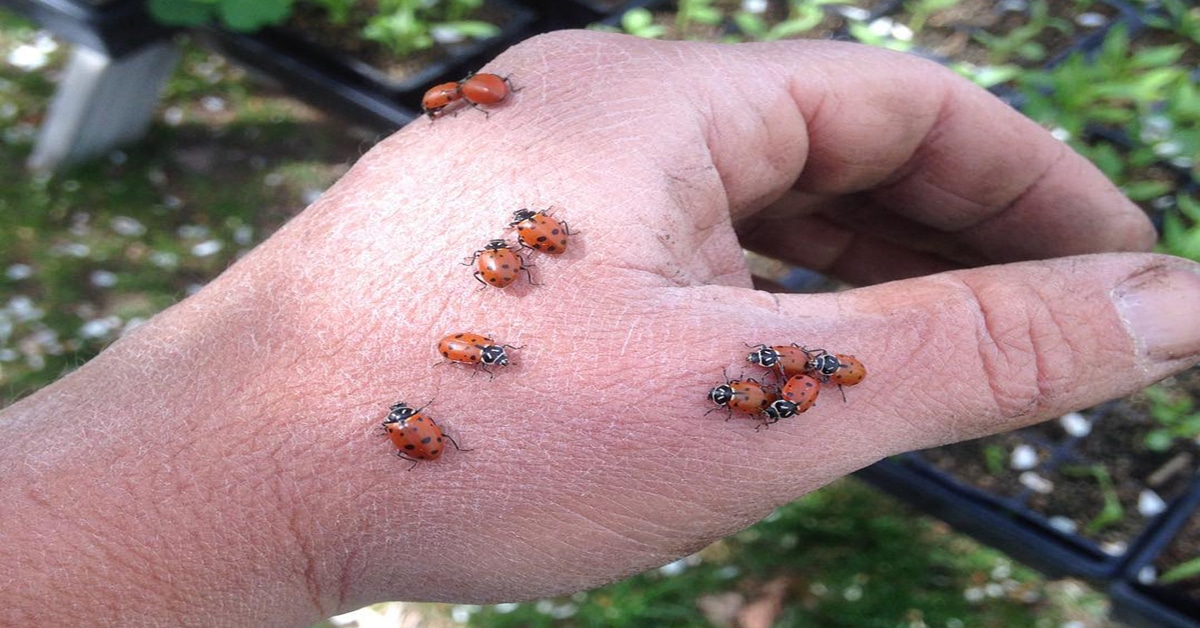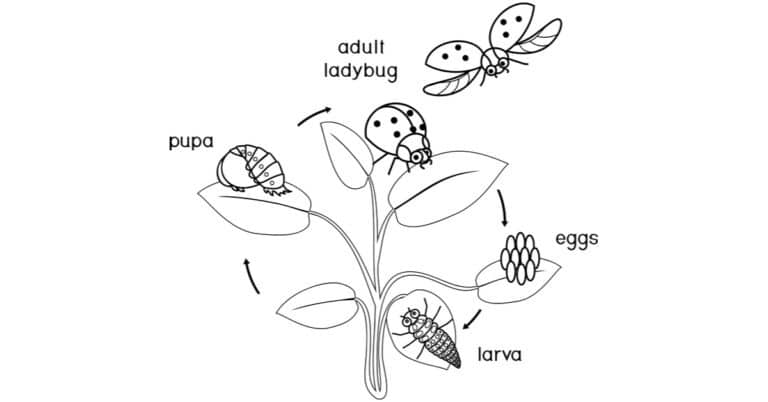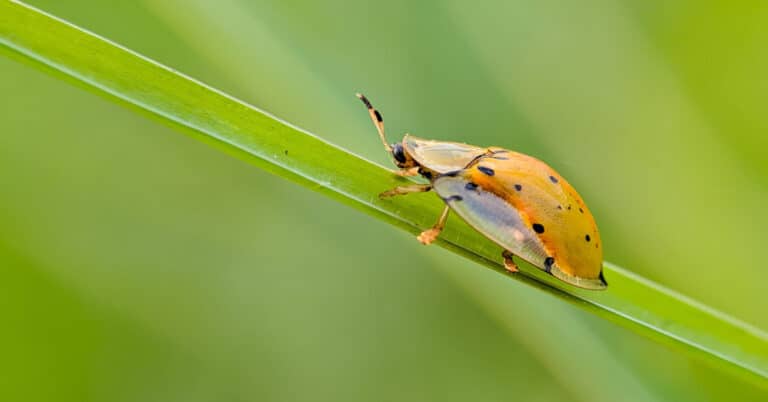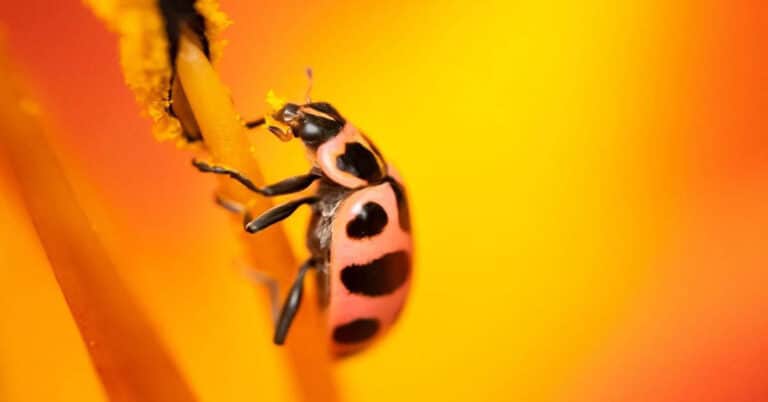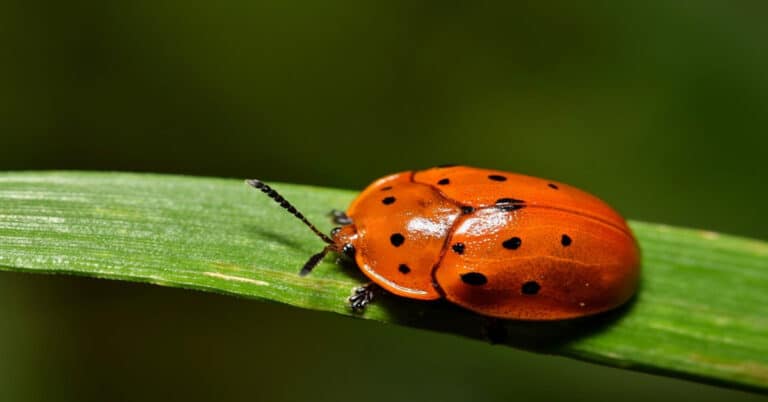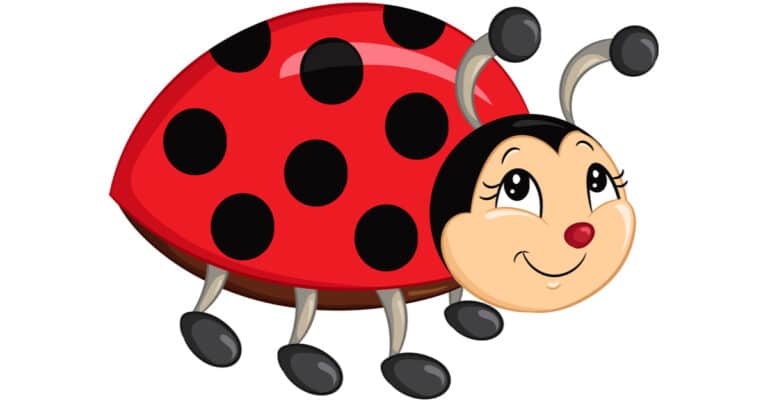Do Ladybugs Bite?
What we know about ladybugs is that they are harmless, beautiful creatures that are very beneficial for our gardens. However, while they may represent cute insects to many people, sometimes they can be mean to us, as well. You might naturally wonder about these insects: do ladybugs bite? The truth is that ladybugs can invade our homes, and in some cases, they can even bite or pinch us.
But are these bites harmful? Can we avoid it? Or how can we help it?
Keep reading to find out whether or not ladybugs bite and get to know more details about the habits of these beautiful insects.
Do Ladybugs Bite Humans?
Ladybugs have a decorative meaning for many of us. However, they play their part in balancing nature, as do all the other creatures created. But if that’s the case, why do people wonder so often whether or not do ladybugs bite?
The reason why they bite is that they also have a self-protective instinct, making them do things we would never imagine they could. For example, they have small legs that they use to pinch their prey. A ladybug bite can barely harm us, but in cases where you have an allergy, things might get a little complicated. Either way, one thing is for sure: the answer to the question “do ladybugs bite humans” is positive.
Intriguingly, in a 2004 study, an entomologist placed 641 beetles in 11 different plastic containers, then cleaned and dried his hands before putting his palm into the containers to observe if the ladybugs bit him.
As a result, he discovered that 26% of the 641 insects bit him in hairless places. The interesting thing is that he wasn’t threatening ladybugs, meaning the bites weren’t self-protective. Ladybugs might have thought of human skin as some kind of food source. However, it’s essential that a much higher rate of female ladybug bites than males. So, do ladybugs bite more if they’re female? This topic probably requires further research.
Do Ladybugs Bites Harm People?
Now that we already know the answer to the question “do ladybugs bite” the next important thing to discuss is whether these bites are dangerous. Most humans are unaffected by ladybugs. Their bites mostly do not cause major harm or spread illness. They frequently feel like a pinch rather than a full bite.
Even though most cases of ladybug bites end peacefully, there can be some rare events of allergic reactions that may threaten your health. These allergies can be expressed in:
- Respiratory Problems
- Stuffy Nose
- Swollen Eyes
Types Of Ladybugs That Bite
There are many species of ladybugs, and all of them have unique characteristics that make them stand out from other species. Ladybugs are primarily recognized for being helpful tiny critters that eat annoying aphids, but if they feel threatened, they can bite or pinch.
Are you wondering do ladybugs bite regardless of their species? Let’s discuss some of the species that are known for their bites.
Blue Ladybug
The blue ladybug is an Australian native, but it was imported to New Zealand in the early 1900s. It is currently prevalent in both nations. The blue ladybug is advantageous since it preys on pests such as aphids. They are attracted to green and feed on plant lice and scale insects. Do ladybugs bite if they’re blue? Well, they sometimes bite people but aren’t poisonous.
Asian ladybugs
Asian ladybugs, commonly known as orange ladybugs, are a kind of beetle that is endemic to regions of Russia near the Asian continent. Asian ladybugs are distinguished by their orange coloration and black markings on the outside of their shells.
Do ladybugs bite if they originate from Asia? Orange ladybugs, interestingly, are one of the most poisonous varieties of ladybugs. When threatened, they may discharge a foul-smelling fluid, and their bite and pinch can be excruciating.
They aren’t stinging insects, and their sting isn’t as terrible as bee or wasp stings. People allergic to ladybug bites may develop an itchy rash or swelling after being bitten by an orange ladybug.
Red Ladybugs
Do ladybugs bite if they’re red? Yes, red ladybugs also bite people. The red ladybug has a reputation for biting humans more than other ladybugs. Their wings are decorated with designs, but they also have powerful legs that they may use to squeeze people.
Do Ladybugs Have Teeth?
Ladybugs prefer to eat soft-bodied insects since they lack teeth. On the other hand, they have chewing mandibles. The ladybugs’ sharp mouthpieces are what allow them to occasionally attack humans. Their mandibles are used for both biting prey and protecting themselves.
So, ladybugs are soft-bodied insects with no actual teeth that serve as a food source for other predators.
What Does a Bite Look Like?
Ladybug bites are generally tiny and appear as a raised red mark on the skin, like many other insect bites. When humans are bitten, they usually don’t feel anything, although some people may have slight discomfort or swelling. They can’t penetrate human skin, so there’s no need to be concerned about serious bites unless you have an allergic reaction.
What Attracts Them?
Ladybugs are more likely to invade people’s houses during the fall or winter season since they are looking for a warm place to live. They normally hibernate until the beginning of the spring season. These processes can be very inconvenient and bothersome for humans.
You can keep ladybugs out of your house by using the following methods:
- Make sure that all of the doors and windows are well sealed. Ladybugs may enter even small spaces. To keep ladybugs out of your entrances, get door sweeps, thresholds, or weather stripping.
- Examine your home for additional entrance points, such as openings where pipes, wires, meters, and television cables enter.
- Mums and lavender, for example, are believed to repel ladybugs naturally. These plants can also be kept in your house.
What If They Bite Us?
If you’re unfortunate enough to be stung by one, don’t be concerned. Ladybugs are not normally violent, but if they feel threatened, they may bite. If you’ve been bitten, clean the bite with gentle soap and water and apply a cold compress.
Most individuals don’t require any more treatment, but if the bite becomes infected, visit a doctor. Although most ladybugs are harmless, the harlequin type can induce allergic reactions in certain people. A cold compress and antihistamine cream can be used to cure a ladybug bite.
How To Get Rid Of Them?
Getting rid of a ladybug infestation in your home requires attention to treatment and prevention. These cute creatures can sometimes be very annoying. In this case, you might want to start thinking about getting rid of them. There are a few alternatives you can choose from:
- Use pesticide sprays on the outside of your house. Spraying should be done in late September or early October before ladybugs try to make their way inside for the winter. Professional pest control firms may also provide these services and guarantee that you are well-protected. However, avoid using these pesticide sprays inside your home since they might cause some health complications and look for safer options.
- To help eradicate ladybugs from your house, vacuum and sweep them up. If you prefer to handle them by hand, keep in mind that ladybugs protect themselves by bleeding from their joints. This is referred to as “reflex bleeding” by doctors. These might cause an allergic reaction in humans, or their blood can stain carpets and walls if they’re handled violently.
- Diatomaceous earth is a fantastic alternative if you don’t want to use chemicals. It’s a form of soft sedimentary earth that’s employed as a natural insecticide. Ladybugs will become dry and perish as a result.
- Mums are flowers that produce a toxin that kills insects but is safe for other animals, making them an excellent natural insect repellent. Put some in vases and plant them in your house. Lavender is another excellent herb to have around your house since it repels ladybugs.
- Light attracts insects, and it can be used as a good trap for undesirable little creatures. Light traps are traps that employ a bright light to attract and capture ladybugs. After that, you can securely remove them from your house.
Ladybug swarms, despite their innocuous nature, are generally not something you want in your home. There are several ways to get rid of them. However, it’s important to remember that once they’ve died, they may continue to induce allergic responses, so it’s necessary that you completely remove the ladybugs from your home.
Final Words – Do Ladybugs Bite?
So, ladybugs bite? And should we be concerned about ladybug bites? First of all, they aren’t venomous or fatal, and no blood is consumed while biting. They don’t carry parasites or illnesses, so they are safe in most cases and don’t threaten our health. However, they may still be very annoying. A ladybug bite usually results in a raised red bump that hurts for a few days.
Aside from that, the biting mouthparts of this insect rarely have enough force to penetrate the skin. However, like with any insect, some people are allergic to ladybug bites and may experience an allergic reaction. Seek medical help if you develop a rash, illness, or unusual swelling.
Because ladybugs don’t hurt people very often, their overwintering and collecting activities are significantly more alarming to homeowners. It’s not uncommon to observe thousands of ladybugs congregating around a single house in various regions of the nation.
To sum up, you don’t have to worry too much about ladybug bites. However, it’s better to avoid interacting with them in any kind of way that may cause your or their damage.

Nato is a content writer and researcher with a background in psychology who’s eager to explore the wonders of nature. As a travel enthusiast and animal lover, she hopes to inspire others to discover and cherish the beauty and importance of the natural world.

